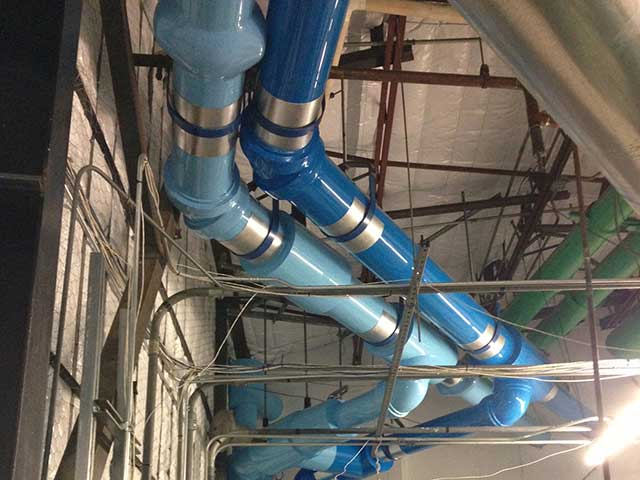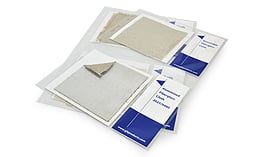Pipe insulation requires a protective layer to prevent contamination that would otherwise destroy the integrity of the insulation. The methodology of protecting insulation has changed over the years and PVC (Polyvinyl chloride) has become an industry standard and preferred product used by insulation contractors world-wide.
Why use PVC instead of other protective jacketing systems?

PVC is extremely versatile, low maintenance, durable and attractive. It can be formulated in just about any color, is UV stabilized, flame retardant and impact resistant.
PVC jacketing systems are the desired choice for food processing, beverage and pharmaceutical facilities as the systems needs to meet stringent USDA requirements. When sealed with welding adhesives, PVC jacketing systems can withstand repeated wash-downs and will resist contamination infiltration while maintaining its clean appearance.
PVC fitting covers have become the product of choice to finish fittings in commercial fiberglass piping systems. PVC has an upper temperature range to 150ºF and can be used for both cold and hot systems.
PVC’s environmental performance begins with the raw material used to make it – most commonly, salt – a practically unlimited resource. Production of PVC requires smaller amounts of non-renewable petroleum resources than many other alternative materials, while using significantly less energy. PVC can be recycled and re-used in a variety of other building products.


